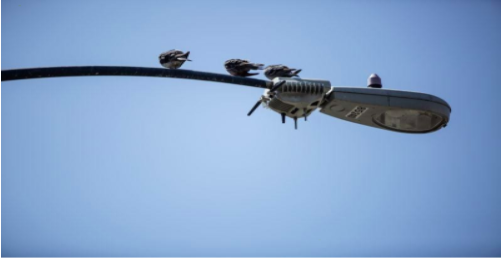When looking for surveillance camera systems, it is easy to get flooded by the number of devices or products available in the market. Not only that, but the confusing technical terms that come with this technology can also be pretty overwhelming. Just walk into a bog retailer, and there are a lot of brands that sell devices with almost the same features.
Every brand claim that they are offering high-resolution cameras with night vision, and sorting through every claim can be pretty confusing. What most people don’t realize is that there are security cameras available to the public, although they are not found in regular stores and warehouses. These types of surveillance cameras are known as commercial-grade security camera systems.
These types of cameras are used by big companies to secure their inventories. Look at the walls and ceilings of electronic stores or warehouse chains, and you will see that every aisle has a dome camera that is larger than the conventional consumer camera. These companies don’t even use the kind of devices that they are selling to the public, and there’s a reason for that.
Commercial-grade versus consumer-grade versus security cams
There are two categories of security cameras. What people usually find in stores are consumer-grade ones, which are usually eight or sixteen devices bundled with video recorders and sell for less than $1,000 for one set. The second category are commercial-grade devices like solar-powered cameras and streetlights that usually starts at around $300 to $400 per device, which is higher than that of consumer-grade ones. The video recorder must be bought separately. It costs about $500 each and can go up to $5,000, depending on its camera connectivity, amount of storage, and image processing features.
Quality
On the surface, both systems may appear similar, although if you look inside, the differences become pretty distinct and noticeable. Commercial-grade systems are built and designed for high-performance apps where failure is not an option. On the other hand, consumer-grade ones are not designed or built for that kind of task.
Usually, consumer-grade systems are designed to work well when there’s a lot of available light. Once the light becomes absent or low (during sunset or nighttime), their quality begins to show. Commercial systems outperform their counterparts since they have higher-quality components and bigger internal video sensors that can adapt and capture excellent low-light videos.
Imagine, if a descent still-camera can cost at around $200, how much more a more sophisticated device. Can it be sold at a lower price? It does not add up. To offer lower prices, manufacturers have to cut corners. The end result is a low-quality performance.
To know more about the history of surveillance cams, visit this site for more details.
These types of devices need to perform flawlessly in a dark or bright environment. Consumer-grade devices can work well in specific situations such as checking in on pets or as nanny cams, though when you are looking for evidence of a crime, they usually come up short.
Night Vision
Now let us take a closer look at why consumer-grade devices are usually weak in the night vision department. When cams try to see in an area with poor light, it needs light sources to help illuminate the area they are trying to record. The bad news is that the night vision illuminators of these devices are designed for short-range recording and fix their brightness.
To know how night vision works, check out https://www.howtogeek.com/291282/how-do-night-vision-cameras-and-goggles-work for more information.
It means that the device usually over-expose what is in its vicinity. It can cause objects and people to appear blown-out of proportion and without details. It won’t help enterprises or law enforcers identify the perpetrators of crimes. But commercial cameras are usually equipped with advanced NVIR or night vision infrared illuminators that can help automatically adjust the brightness to the scene.
This ability of the camera is called Smart IR, and it helps match the devices’ infrared light output to that of its environment. With this feature, subjects appear appropriately exposed and with full details. Its usefulness is pretty limited if cams can’t deliver or capture properly-exposed or sharp images during the day or night. And if the device’s capability is limited, there is no reason to use them since it will only give images that are not useful to law enforcement or companies.


